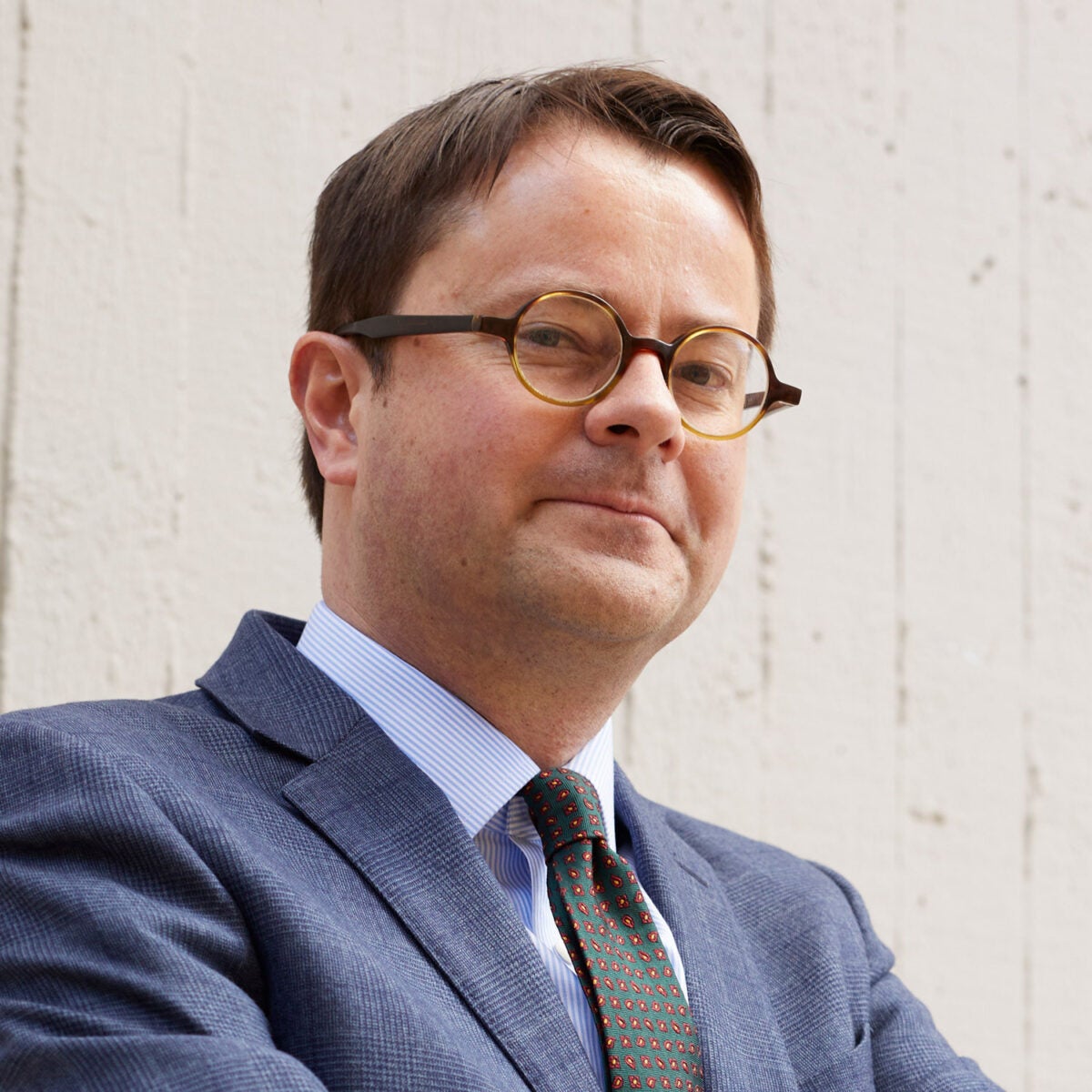
Opinion
Why public health should attend to the spiritual side of life
There’s a long list of social determinants that we know matter for health outcomes: employment, income, social support, race, discrimination, education, and neighborhood, among others. Often missing from such lists, however, is religion. Religion and spirituality do not appear in the World Health Organization’s Commission on Social Determinants of Health; there is no chapter on this topic in the standard textbook on social epidemiology. It is not often covered in courses on health and society.
The standard narrative for the neglect sometimes seems to be that “there is not actually that much research around the impact of spirituality on health.” This, however, is simply not the case. A major 2022 systematic review in the Journal of the American Medical Association documented 215 studies, each with sample sizes over 1,000 participants, using longitudinal data to evaluate the relationship between religion and health. The evidence from meta-analyses, large longitudinal studies (including from Harvard’s own Nurses’ Health Study), and handbooks providing more extensive documentation, suggests that weekly religious service attendance is longitudinally associated with lower mortality risk, lower depression, less suicide, better cardiovascular disease survival, better health behaviors, and greater marital stability, happiness, and purpose in life.
Sign up for Harvard Public Health
Delivered to your inbox weekly.
Whether religion is a cause or just a correlate for such improvements has been an important consideration in these studies, which control for baseline health and adjust also for numerous other social, economic, and behavioral confounding variables. They are robust in sensitivity analysis, and they obtain large effect estimates—results that provide strong evidence for attendance being a cause. The number and quality of studies supporting these conclusions has steadily grown and the evidence base is now very compelling. Religion should not be neglected as a social determinant of health.
While there has been a gradual rise in religion-and-health elective course offerings at schools of public health in this country, this likely won’t be sufficient to prevent religion from being ignored as a social determinant within public health. Few students register, and the standard (flawed) narrative continues. I have argued, with coauthors, that perhaps the single most important step for raising awareness of religion’s effect on health would be incorporating this material into a single lecture in a required course, such as social epidemiology or health and society.
Failing to consider religious community in thinking about public health may impede our understanding of the health of populations. Extrapolations from the Nurses’ Health Study data suggest that about 40 percent of the increasing suicide rate in the United States from 1999 to 2014 might be attributed to declines in attendance at religious services during this period. Another study suggested declining attendance from 1991 to 2019 accounted for 28 percent of the increase in depression among adolescents. To ignore these trends is to be blind to the forces that shape population health.
But ignore them we do. A recent major review in the Annual Review of Public Health of trends in suicide completely omits questions of religion and spirituality; as noted above, so do many of our standard documents and texts. Already fairly minimal National Institutes of Health funding for research on this topic has recently begun to further decline, and notably so in comparison to funding for, say, optimism or social support research.
Looking at the data we have on religious participation and health, it seems reasonable to encourage those who already identify with a religious tradition to participate in communal religious life. And, for those without a religious identity, we can instead promote participation in other forms of community. Such “social prescribing” has found a place in the United Kingdom—and was among the recommendations in the U.S. Surgeon General’s 2023 report on loneliness. If we do not follow those recommendations, we are neglecting an important health resource, and will be leaving the population in poorer health.
It is time for the neglect of religion in public health conversations to change. Funding should increase. The research literature should be taught in courses. And we should embrace religion as a social determinant of health.
Source images: Leontura / iStock, Chainarong Prasertthai / iStock

Republish this article
<p>Research suggests weekly service attendance is associated with better health.</p>
<p>Written by Tyler VanderWeele</p>
<p>This <a rel="canonical" href="https://harvardpublichealth.org/policy-practice/why-are-spirituality-and-health-not-linked-in-public-health/">article</a> originally appeared in<a href="https://harvardpublichealth.org/">Harvard Public Health magazine</a>. Subscribe to their <a href="https://harvardpublichealth.org/subscribe/">newsletter</a>.</p>
<p class="has-drop-cap">There’s a long list of social determinants that we know matter for health outcomes: employment, income, social support, race, discrimination, education, and neighborhood, among others. Often missing from such lists, however, is religion. Religion and spirituality do not appear in the <a href="https://www.who.int/initiatives/action-on-the-social-determinants-of-health-for-advancing-equity/world-report-on-social-determinants-of-health-equity/commission-on-social-determinants-of-health" target="_blank" rel="noreferrer noopener">World Health Organization’s Commission on Social Determinants of Health</a>; there is no chapter on this topic in the standard textbook on <a href="https://academic.oup.com/book/24997" target="_blank" rel="noreferrer noopener">social epidemiology</a>. It is not often covered in courses on health and society.</p>
<p>The standard narrative for the neglect sometimes <a href="https://harvardpublichealth.org/mental-health/senator-chris-murphy-on-loneliness-and-social-media-regulation/" target="_blank" rel="noreferrer noopener">seems to be</a> that “there is not actually that much research around the impact of spirituality on health.” This, however, is simply not the case. A major 2022 <a href="https://jamanetwork.com/journals/jama/article-abstract/2794049" target="_blank" rel="noreferrer noopener">systematic review</a> in the <em>Journal of the American Medical Association</em> documented 215 studies, each with sample sizes over 1,000 participants, using longitudinal data to evaluate the relationship between religion and health. The evidence from <a href="https://karger.com/pps/article-abstract/78/2/81/282382/Religiosity-Spirituality-and-MortalityA-Systematic" target="_blank" rel="noreferrer noopener">meta-analyses</a>, <a href="https://academic.oup.com/ije/article/49/6/2030/5892419" target="_blank" rel="noreferrer noopener">large longitudinal studies</a> (including from Harvard’s own <a href="https://jamanetwork.com/journals/jamainternalmedicine/article-abstract/2521827" target="_blank" rel="noreferrer noopener">Nurses’</a> <a href="https://academic.oup.com/abm/article/50/6/876/4562664" target="_blank" rel="noreferrer noopener">Health</a> <a href="https://jamanetwork.com/journals/jamapsychiatry/article-abstract/2529152" target="_blank" rel="noreferrer noopener">Study</a>), and <a href="https://global.oup.com/academic/product/handbook-of-religion-and-health-9780190088859" target="_blank" rel="noreferrer noopener">handbooks</a> providing more extensive documentation, suggests that weekly religious service attendance is longitudinally associated with lower <a href="https://journals.plos.org/plosone/article?id=10.1371/journal.pone.0189134" target="_blank" rel="noreferrer noopener">mortality risk</a>, lower <a href="https://academic.oup.com/abm/article/50/6/876/4562664" target="_blank" rel="noreferrer noopener">depression</a>, less <a href="https://jamanetwork.com/journals/jamapsychiatry/article-abstract/2529152" target="_blank" rel="noreferrer noopener">suicide</a>, better <a href="https://jamanetwork.com/journals/jamainternalmedicine/article-abstract/2521827" target="_blank" rel="noreferrer noopener">cardiovascular disease survival</a>, better <a href="https://academic.oup.com/aje/article/187/11/2355/5094534" target="_blank" rel="noreferrer noopener">health behaviors</a>, and greater <a href="https://journals.plos.org/plosone/article?id=10.1371/journal.pone.0207778" target="_blank" rel="noreferrer noopener">marital stability</a>, <a href="https://journals.sagepub.com/doi/abs/10.1177/0003122410386686" target="_blank" rel="noreferrer noopener">happiness</a>, and <a href="https://academic.oup.com/ije/article/49/6/2030/5892419" target="_blank" rel="noreferrer noopener">purpose in life</a>.</p>
<p>Whether religion is a cause or just a correlate for such improvements has been an important consideration in these studies, which control for baseline health and adjust also for numerous other social, economic, and behavioral confounding variables. They are robust in sensitivity analysis, and they obtain large effect estimates—results that provide strong evidence for attendance being a cause. The number and quality of studies supporting these conclusions has steadily grown and the evidence base is now very compelling. Religion should not be neglected as a social determinant of health.</p>
<p>While there has been a gradual rise in religion-and-health <a href="https://link.springer.com/book/10.1007/978-3-319-73966-3" target="_blank" rel="noreferrer noopener">elective course offerings</a> at schools of public health in this country, this likely won’t be sufficient to prevent religion from being ignored as a social determinant within public health. Few students register, and the standard (flawed) narrative continues. I have argued, with coauthors, that perhaps the single most <a href="https://jamanetwork.com/journals/jama/article-abstract/2794049" target="_blank" rel="noreferrer noopener">important</a> <a href="https://ajph.aphapublications.org/doi/abs/10.2105/AJPH.2016.303501?journalCode=ajph" target="_blank" rel="noreferrer noopener">step</a> for raising awareness of religion’s effect on health would be incorporating this material into a single lecture in a required course, such as social epidemiology or health and society.</p>
<p>Failing to consider religious community in thinking about public health may impede our understanding of the health of populations. Extrapolations from the Nurses’ Health Study data <a href="https://jamanetwork.com/journals/jamapsychiatry/article-abstract/2589160" target="_blank" rel="noreferrer noopener">suggest</a> that about 40 percent of the increasing suicide rate in the United States from 1999 to 2014 might be attributed to declines in attendance at religious services during this period. Another <a href="https://link.springer.com/article/10.1007/s10943-021-01390-8" target="_blank" rel="noreferrer noopener">study</a> suggested declining attendance from 1991 to 2019 accounted for 28 percent of the increase in depression among adolescents. To ignore these trends is to be blind to the forces that shape population health.</p>
<p>But ignore them we do. A recent <a href="https://www.annualreviews.org/content/journals/10.1146/annurev-publhealth-051920-123206" target="_blank" rel="noreferrer noopener">major review</a> in the <em>Annual Review of Public Health</em> of trends in suicide completely omits questions of religion and spirituality; as noted above, so do many of our standard <a href="https://www.who.int/initiatives/action-on-the-social-determinants-of-health-for-advancing-equity/world-report-on-social-determinants-of-health-equity/commission-on-social-determinants-of-health" target="_blank" rel="noreferrer noopener">documents</a> and <a href="https://academic.oup.com/book/24997" target="_blank" rel="noreferrer noopener">texts</a>. Already fairly minimal National Institutes of Health funding for research on this topic has recently begun to further decline, and notably so in <a href="https://pubmed.ncbi.nlm.nih.gov/38169027/" target="_blank" rel="noreferrer noopener">comparison to funding</a> for, say, optimism or social support research.</p>
<p>Looking at the data we have on religious participation and health, it seems reasonable to <a href="https://academic.oup.com/aje/article/191/1/31/6274220" target="_blank" rel="noreferrer noopener">encourage</a> those who <em>already</em> identify with a religious tradition to participate in communal religious life. And, for those without a religious identity, we can instead promote participation in other forms of community. Such “social prescribing” has found a place in the <a href="https://www.england.nhs.uk/wp-content/uploads/2020/06/social-prescribing-summary-guide-updated-june-20.pdf">United Kingdom</a>—and was among the recommendations in the <a href="https://www.hhs.gov/sites/default/files/surgeon-general-social-connection-advisory.pdf">U.S. Surgeon General</a>’s <a href="https://www.hhs.gov/sites/default/files/surgeon-general-social-connection-advisory.pdf">2023 report on loneliness</a>. If we do not follow those recommendations, we are neglecting an important health resource, and will be leaving the population in poorer health.</p>
<p></p>
<p class=" t-has-endmark t-has-endmark">It is time for the neglect of religion in public health conversations to change. Funding should increase. The research literature should be taught in courses. And we should embrace religion as a <a href="https://academic.oup.com/book/7401" target="_blank" rel="noreferrer noopener">social determinant of health</a>.</p>
<script async src="https://www.googletagmanager.com/gtag/js?id=G-S1L5BS4DJN"></script>
<script>
window.dataLayer = window.dataLayer || [];
if (typeof gtag !== "function") {function gtag(){dataLayer.push(arguments);}}
gtag('js', new Date());
gtag('config', 'G-S1L5BS4DJN');
</script>
Republishing guidelines
We’re happy to know you’re interested in republishing one of our stories. Please follow the guidelines below, adapted from other sites, primarily ProPublica’s Steal Our Stories guidelines (we didn’t steal all of its republishing guidelines, but we stole a lot of them). We also borrowed from Undark and KFF Health News.
Timeframe: Most stories and opinion pieces on our site can be republished within 90 days of posting. An article is available for republishing if our “Republish” button appears next to the story. We follow the Creative Commons noncommercial no-derivatives license.
When republishing a Harvard Public Health story, please follow these rules and use the required acknowledgments:
- Do not edit our stories, except to reflect changes in time (for instance, “last week” may replace “yesterday”), make style updates (we use serial commas; you may choose not to), and location (we spell out state names; you may choose not to).
- Include the author’s byline.
- Include text at the top of the story that says, “This article was originally published by Harvard Public Health. You must link the words “Harvard Public Health” to the story’s original/canonical URL.
- You must preserve the links in our stories, including our newsletter sign-up language and link.
- You must use our analytics tag: a single pixel and a snippet of HTML code that allows us to monitor our story’s traffic on your site. If you utilize our “Republish” link, the code will be automatically appended at the end of the article. It occupies minimal space and will be enclosed within a standard <script> tag.
- You must set the canonical link to the original Harvard Public Health URL or otherwise ensure that canonical tags are properly implemented to indicate that HPH is the original source of the content. For more information about canonical metadata, click here.
Packaging: Feel free to use our headline and deck or to craft your own headlines, subheads, and other material.
Art: You may republish editorial cartoons and photographs on stories with the “Republish” button. For illustrations or articles without the “Republish” button, please reach out to republishing@hsph.harvard.edu.
Exceptions: Stories that do not include a Republish button are either exclusive to us or governed by another collaborative agreement. Please reach out directly to the author, photographer, illustrator, or other named contributor for permission to reprint work that does not include our Republish button. Please do the same for stories published more than 90 days previously. If you have any questions, contact us at republishing@hsph.harvard.edu.
Translations: If you would like to translate our story into another language, please contact us first at republishing@hsph.harvard.edu.
Ads: It’s okay to put our stories on pages with ads, but not ads specifically sold against our stories. You can’t state or imply that donations to your organization support Harvard Public Health.
Responsibilities and restrictions: You have no rights to sell, license, syndicate, or otherwise represent yourself as the authorized owner of our material to any third parties. This means that you cannot actively publish or submit our work for syndication to third-party platforms or apps like Apple News or Google News. Harvard Public Health recognizes that publishers cannot fully control when certain third parties aggregate or crawl content from publishers’ own sites.
You may not republish our material wholesale or automatically; you need to select stories to be republished individually.
You may not use our work to populate a website designed to improve rankings on search engines or solely to gain revenue from network-based advertisements.
Any website on which our stories appear must include a prominent and effective way to contact the editorial team at the publication.
Social media: If your publication shares republished stories on social media, we welcome a tag. We are @PublicHealthMag on X, Threads, and Instagram, and Harvard Public Health magazine on Facebook and LinkedIn.
Questions: If you have other questions, email us at republishing@hsph.harvard.edu.


